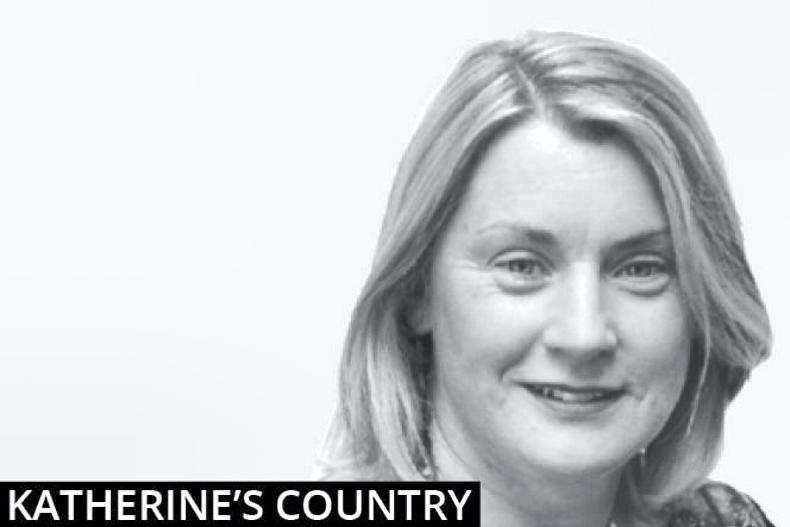The rain has come nicely for the last two weeks and the grass has responded quickly. The deficit in rainfall here in Cork was estimated at 60ml. We now have recorded 41ml here in Woodside.
Colm would not have had quite the same shortfall and yet he received over 60ml over the same period and only a few kilometres away. The answer is to be gleaned from the topography of the area. The interactions between mountains and clouds and the direction of the wind defines our rainfall. Scientifically, it can all be explained but that doesn’t really help the farmer that has too little or too much rain.
There are days the rainfall causes elation and other times it’s devastation. The grass seeds that were stitched in by Pat for our son-in-law David are now jumping out of the ground. Both Tim and David are relieved although it’s not discussed. The seed man is confident about his advice and the farmer is certain about his management of his fields and how the ground there would respond to stitching. There is also plenty of clover visible.
The grass seeds that were tilled in conventionally are slow to come but have a serious cover of weeds. That will have to be sprayed in the next few days to check the weeds and give the grass seeds a chance of making a crop.
Grass walks
Grass walks are being done every three days to keep on top of what is happening. Six paddocks have the same cover of grass at 1,100kg DM/ha. This is to be expected after a drought. Grass had stopped growing so all grazed paddocks respond to the rain and grow simultaneously, giving a rather flat looking grass wedge.
The irony is that it is time to take out some paddocks for bales again. Each cow needs three bales, one for the spring, one for the winter and one for the drought. She has already eaten the drought reserve so let’s hope there won’t be another drought later in the summer.
Another consequence of drought is that grass, in order to regenerate itself, goes to seed and the quality deteriorates. Tim is out with the topper after the cows have finished grazing a paddock. The fields are starting to look like a continuation of the lawn.
“The Big Field” is a great field for growing grass but during the drought the docks flourished. The cows looked like they were grazing savannah grass or something with the brown seed heads towering menacingly above the grass. As soon as the cows were done, I could hear the hum of the topper up and down the field. There’s something very summery about that sound.
The upshot is I have lawn stretching right and left on the way into the house. It’s very pleasing indeed. On another note, Tim was checking his diary the other day to find that the drought ended on the same week as it did last year.
Holiday time
The next few weeks are definitely the time to get away for a few days from the farm. Everyone needs a break to recharge the batteries for autumn and winter. There are no excuses and you are a busy fool if you don’t allow yourself some time off. There have been some lovely programmes on RTÉ on the wealth of heritage and unique flora and fauna on the Burren area. It has made me want to walk it some more when I’m fit and able.
Tim and I grabbed a weekend in the Smugglers Inn in Waterville, Co Kerry, when I had a good week. We strolled the sandy beach at Ballinskelligs Bay and had a scrumptious meal in the restaurant. On the Saturday, we went to Derrynane House, home of Daniel O’Connell and a stroll on Derrynane beach. The tide was out so we were able to go out to Abbey Island.
We walked around the graveyard, reading the historical names. In typical Irish fashion, a local lady called out to us and indicated the tombstone of Mrs O’Connell. We walked back along the water’s edge and I carried my sandals and enjoyed the waves lapping onto my toes. We visited Kells Bay gardens on the Sunday. We had a most pleasant weekend. It is important to seize the moment.






 This is a subscriber-only article
This is a subscriber-only article










SHARING OPTIONS: